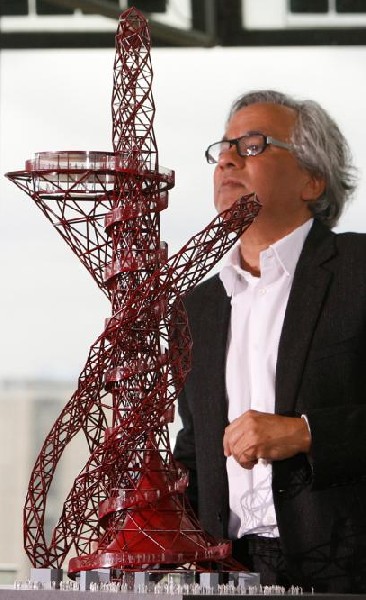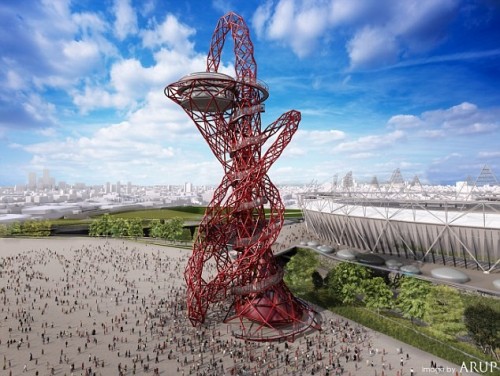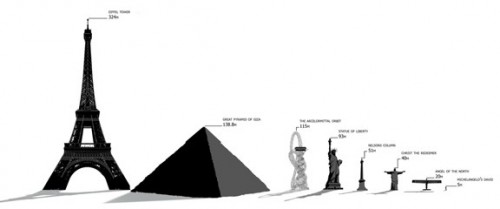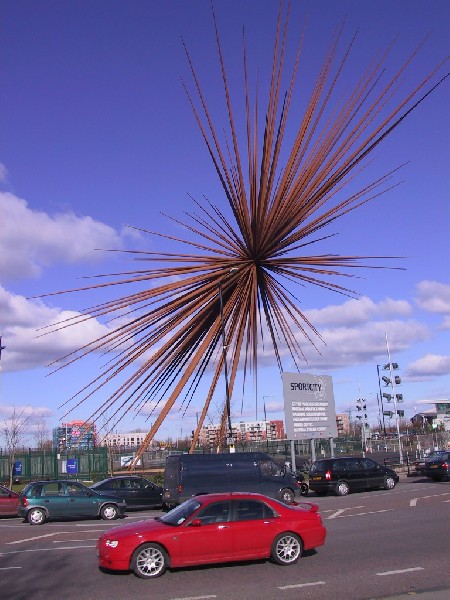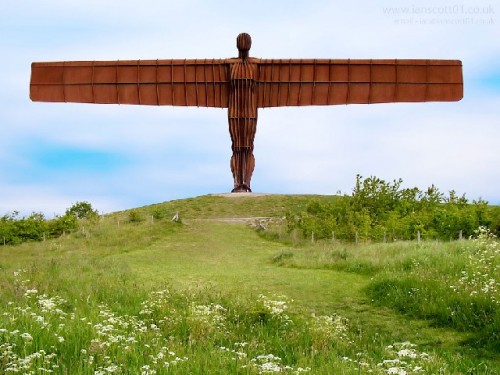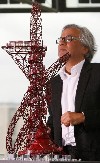Anish Kapoor's Olympic Public Art
You Can't Always Get What You Want
By: Mark Favermann - May 08, 2010
The best of public art is wonderful civic design. The worst of public art is any large ambiguous expression of artistic ego and often corporate or governmental hubris. Despite what most curators and art administrators might think (good art could be great art if only made bigger), most artists, even those considered by many to be great, are not necessarily capable of creating great, good or even just successful works of public art. Scale and gesture are meaningful components of public art. When used well, they add soul and context to the shared visual experience. When the artwork fails, the weakness of the gesture is just magnified and the expression is negative.
That said, there is a gigantic controversial public art piece scheduled for London. Arguably one the world's most renowned sculptors, Anish Kapoor has been commissioned to create a huge public artwork for the 2012 Olympics. It will be set at the Olympic Park in a redeveloping area of East London. The price of the artwork is around $28 million. This is by far the largest amount ever paid for a piece of British public art. The major sponsor of the art is the Indian steel billionaire Lakshmi Mittal.
When erected, the project (Orbit) will stand at about the same height as the Great Pyramid at Giza and be a permanent part of the London skyline. It has been described by critics as looking like an enormous wire mesh fence wrapped around a french horn. It looks more like an Erector Set on steroids that has somehow coiled upon itself. Orbit also looks like an enormous vertical loopdy-loop carnival ride. Like the "Eye" the gigantic Ferris Wheel across the Thames from Westminster, The Orbit will be a tourist attraction allowing 700 people an hour to visit its observation deck. This viewing area will be 100 metres above the ground. So there will be a Ferris Wheel at one location and a giant loopdy-loop at another on the London horizon. Is this a not so subtle urban statement about a carnival of ideas or a city circus?
Of course, the pundits, wags and Philistines have all said that the repairs to elevators in nearby public housing high rises would allow cheaper and as good a view of East London and beyond. However, the project is not about just tourism, but the convergence of money, art, politics and even technology. Kapoor gets a massive King Kong-like thumping chest showcase piece and billionaire Mittal gets company brand connection. The piece's formal name will be The ArcelorMittal Orbit. The City of London gets another monumental tower, and to many, a phallic legacy to Boris Johnson the Mayor of London's tenure.
There has never been a great legacy of wonderful Olympic art. Though there has been lip-service given to culture at each Olympics, little has resulted from it at past Olympiads. If Orbit succeeds, it will be the first major artwork that came out of a modern Olympic Games. This is a creative and somewhat expensive chance that London is taking.
As with many massive public art pieces, this artwork is about artistic ego writ in huge scale. Kapoor's Orbit is to be taller than the Statue of Liberty. Orbit will be twice as high as Mark Wallinger’s proposed but community-denigrated giant horse at Ebbsfleet in Kent. It will be five times taller than Antony Gormley's Angel of the North in Gateshead. Gormley recently erected (good use of a term) nude castings of his full body on roof tops and pocket parks throughout midtown Manhattan. This temporary exhibit has garnered controversy and compliments.
Public art is rarely democratic. The desired hope is that the majority of the population do not find it too offensive. To be seen by hundreds of thousands of Londoners and visitors, like many other public artworks, Orbit was chosen by a few judges. This always brings criticism to any public project and certainly allows for shouts and moans of cultural elitism and public waste. This happens whenever art has price tags with six, seven or more digits.
Hopefully, the actual artwork will be more beautiful and spectacular than the maquette. There are a subtle aesthetic and demonstrative energy in most of Kapoor's sculptures, both huge and those more human in scale. However, this piece seems to be not in keeping with Kapoor's more elegantly minimalist and thus simpler visual statements. It is strongly theatrical. Part of the proof will be in the engineering. Anish Kapoor is working Cecil Balmond of Arup engineering to get it right. The danger is demonstrated by Thomas Heatherwick’s now-notorious B of the Bang sculpture in Manchester. Similarly, this piece was to commemorate another major sports even, the 2002 Commonwealth Games hosted by the City of Manchester. Bang became bits that started to dangerously fall off. Public art as public hazard.
Of course, there is always the danger of mediocrity. Most public monuments and public art around the world have been and are mediocre or sometimes less. In the US, major pieces of public art take years and sometimes decades to create and implement. The often onerous process more than sometimes results in less than spectacular art. However, other times the process produces an art of sheer joy. In London, the Millennium Bridge (a collaboration of Norman Foster Associates, Arup Engineering and sculptor Sir Anthony Caro) and in the US, The St. Louis Gateway Arch by architect Eero Saarinen and structural engineer Hannskarl Bandel and Maya Lin's Viet Nam War Memorial are all contemporary wonderful examples.
Anish Kapoor's elegant and very human (even beloved) Cloud Gate or "Bean" sculpture at Millennium Park is a member of this illustrious group as well. It is hoped that in 2012 when Orbit is installed, the artist made the right decision to step away from his more minimalist aesthetic and move to a theatrically complicated structure. We will have to just wait and see.

